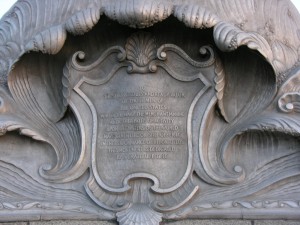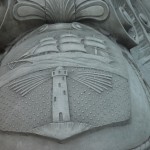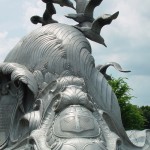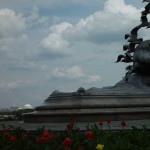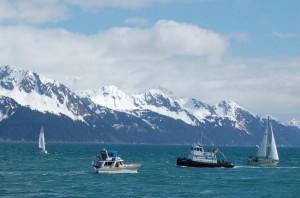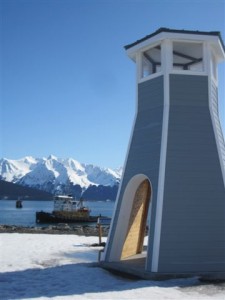Archive for May, 2012
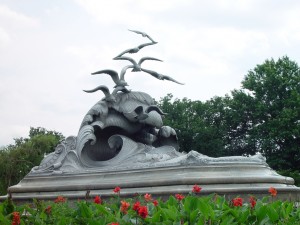 I recently received an email from Paul Parsons of Darnestown, Maryland suggesting two topics for this blog. Paul’s first suggestion was the bravery and sacrifice of the Asiatic Fleet in the early months of 1942. I briefly covered a small part of that history in a May 2011 post on the HMAS Sydney II and the U.S.S Houston. The Asiatic Fleet deserves much more, however. My next post will begin to rectify that oversight.
I recently received an email from Paul Parsons of Darnestown, Maryland suggesting two topics for this blog. Paul’s first suggestion was the bravery and sacrifice of the Asiatic Fleet in the early months of 1942. I briefly covered a small part of that history in a May 2011 post on the HMAS Sydney II and the U.S.S Houston. The Asiatic Fleet deserves much more, however. My next post will begin to rectify that oversight.
Paul’s other suggestion was a post about the Navy – Merchant Marine Memorial in Washington, D.C. Paul noted in his email that the memorial “..is beautiful, but in these times so comprehensive; the specifics of sacrifice are lost to most viewers. It’s location also diminishes its meaning or effect.” I agree with Paul’s observations, but with Memorial Day approaching it seems an appropriate time to focus on the memorial and some of the human sacrifice it represents. All photographs in this post are courtesy of Paul Parsons.
The Navy – Merchant Marine Memorial is located in Lady Bird Johnson Park on Columbia Island. It was designed in 1922 by Harvey Wiley Corbett and sculpted by Ernesto Begni del Piatta. It was dedicated on October 18, 1934 as a monument honoring the sailors and merchant seamen of the United States Navy and United States Merchant Marine who died at sea during WWI. Accurate statistics of American WWI deaths at sea are impossible to quantify, mainly due to the fact that the Merchant Marine had no historical office to compile their records. Best estimates are that somewhere between 2,000 and 7,200 American sailors and merchant seamen lost their lives in WWI. One observation can be made, however – none of the hundreds of people who guided and donated the funds required to construct this memorial in the 1930s envisioned the world a decade later. The number of lost souls this monument would honor would grow by a factor of ten by the end of 1945. The seven gulls riding the cresting waves witnessed sacrifice on the seven seas unknown to any previous generation.
The bloodbath of WWII would claim over 47,000 American lives in the war at sea. Thousands more would be wounded or captured. Over 250,000 Americans served in the Merchant Marine during WWII. About 1 in 25 who served were killed. It is estimated that perhaps as many as 1,700 American merchant ships were sunk during the war – victims of torpedoes, bombs, mines, kamikaze attacks, accidents, collisions, and weather at sea. The danger was constant, the sacrifices extraordinary. A statistic with particular meaning to me is that after the formal surrender of Japan in 1945 at least 87 merchant ships were severely damaged (42 sunk) in the ensuing five years, generally by striking mines. The war did not end for the merchant seaman in 1945 – danger and death most certainly continued. Please expand the photograph and read the inscription found on the memorial. I find these words to be most eloquent. On this Memorial Day I hope we all remember the past and present sacrifices of the Navy sailors, the Coast Guard sailors, and the merchant seamen who “have given life or still offer it in the performance of heroic deeds”.
One of the most satisfying aspects of writing this blog is to hear from people around the world about existing memorials that are new to me and to learn about entirely new memorials nearing completion and dedication. Mike Glaser of the Seward Mariners’ Memorial Committee has been very kind in keeping me advised of the progress of a new memorial in Seward, Alaska that will be dedicated on May 20, 2012. This memorial has taken almost a decade of hard work to bring from concept to dedication – and another 18 months of effort will be required to complete all the aspects of the project design.
It would be difficult to imagine a more beautiful setting for a mariners’ memorial than on this site at the breakwater overlooking Resurrection Bay. The maritime history of Seward began in 1792 and continues through today – whaling, commercial fishing, recreation, and military activities are all woven into the rich fabric of the area. Through the centuries many of those mariners have been lost at sea. The Mariner’s Memorial will become a place where these souls can be remembered and honored. There are also plans to incorporate a section of the memorial in honor of the victims of the 1964 earthquake.
The best way to learn about the memorial is the visit their fine web site at http://www.sewardmarinersmemorial.org/home. Take some time to read about the design and plans for the site, view the construction project photos and videos, and learn more about several of their dedicated volunteers who made this all happen. If you know of someone who should be honored, then please consider ordering a memorial plaque for permanent display. If not, then please make a donation to this fine cause. As I’ve mentioned in this blog before, it’s not always the design and construction funding that is the most difficult to obtain. Ongoing maintenance and care can often be the larger challenge. Please consider donating to this effort.
My home in California is located a few miles from a state park that contains the home and gravesite of the writer Jack London. A museum within the park displays many of London’s original photographs and writings of his time in Alaska. I am quite certain that he once looked out upon the vistas of Resurrection Bay. In addition to writing about Alaska, London wrote one of the enduring classics of maritime life – The Sea Wolf. One of the early lines of this remarkable story concerns burial at sea and its brutal finality…
“I only remember one part of the service,” he said, “and that is ‘And the body shall be cast into the sea’. So cast it in.”
The new Mariners’ Memorial in Seward will certainly be an appropriate place to contemplate the souls lost off her wild and most beautiful shores…
